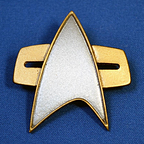Got GUI? A Guide to Server Core 2012 R2’s Minimal Interface
At first glance, Server Core only comes in two flavors: Server Core Installation (Core-only) and Server with a GUI (a.k.a. full installation, Core with a GUI, or Windows Server 2012 R2). Despite being easier to navigate, GUIs use more resources, so many prefer the command line environment of Core-only. But there are server roles and features — for example, Group Policy and Windows Server Update Services — that cannot be installed and/or configured without a GUI.
To solve this, Microsoft added a middle option in 2012 called “Minimal (Server) Interface” or MSI, as it’s less commonly known. (Probably to keep it from being confused with MSI.exe or the Taiwanese computer manufacturer.) Now we’ve all the glories of GUI with none of the bloat!
Fun Fact: Prior to Minimal Interface, server administrators would hook up a laptop that has Server with a GUI, to their Core-only machine, so they could configure Core remotely.
How to install Minimal Interface
Unfortunately, Minimal Interface doesn’t show up as an option when you run a Server 2012 R2 installation CD. You’ll need to do it yourself through PowerShell. This will require installing Windows Server 2012 R2 first, and then performing either an upgrade from Server Core or a downgrade from Server with a GUI.
Method 1: Downgrading to Minimal Interface
Downgrading is simpler than upgrading. To downgrade, run the following in PowerShell:
Uninstall-WindowsFeature Server-GUI-Shell -Remove -RestartAfter restarting, you’ll notice you now have Server Manager along with the cmd window running in Server Core. This is proof that it worked.
Fun Fact: If you close Server Manager by accident, go to Task Manager (launch by pressing CTRL+ALT+DEL) → More details → File → Run new task → type “servermanager”. Typing “servermanager” in PowerShell or cmd will also work.
Method 2: Upgrading to Minimal Interface
Upgrading from Core to Minimal is a bit more work. You’ll need an ISO image of the Windows Server 2012 R2 Installation CD (more specifically, its install.wim file). You’ll also need to know which version (i.e. Standard or Datacenter) of the OS you’ve got. And finally, what is the index number of that OS? Without these details, our PowerShell command won’t run.
- To find which version of Windows is installed in your server, run the following in either PowerShell or cmd:
systeminfo | findstr OSUnder OS Name, it states I’m using Server 2012 R2 Standard Evaluation.
2. To find the index number of that OS Name, insert the ISO, then run the following in PowerShell:
Get-WindowsImage -ImagePath D:\Sources\Install.wimWe’re seeing inside the ISO now. All four versions of Server 2012 R2 available on the disc are listed here. Index 1 is the installation I’m currently running; it’s the Standard version of Server Core. Index 2 is the installation that I want; it’s the full installation of Standard Server Core. But we’re not doing a full installation. We just want to take enough from Index 2 to upgrade our Core-only machine.
3. Keep that ISO inside your machine. Add that index number into the end of the cmdlet seen below. Run the upgrade using PowerShell:
Install-WindowsFeature Server-GUI-Mgmt-Infra -Restart -Source:wim:d:\sources\install.wim:2Fun Fact: You can specify Index 2 or 4 in the above cmdlet without checking, and still get no errors. Both are indexes for the full installs, so the files required for Minimal Interface probably don’t differ much between Standard and Datacenter.
4. After restarting, you’ll notice you now have Server Manager along with the cmd window running in Server Core. This is proof that it worked.
5. You can eject the ISO now.
Comparing Methods: Downgrading vs Upgrading
Without even reading all of the above, a downgrade looks mighty quick. It involves less work and resources. But if you’re working off a new machine, you need to consider the time it’ll take to do a full install before you even get to the downgrade.
And if you’re doing a Core-only installation using an unattended ISO, you can literally pop it in and walk away. In five minutes Server Core will appear, and if you’ve a script ready, it can automate the upgrade for you. Of course, in this scenario, you’ll need to know how to create an answer file and PowerShell scripting too.
To me, it balances out. Preference and skill vary greatly all-around. Either way, you should know both methods. Either way, welcome to the Minimal Interface.
References:
(1) Switch between Full and Server Core in Windows Server 2012 using PowerShell 3.0 | Puneet Vig at TechNet 2012
(2) Configuring the Minimal Server Interface | Ben Herila at TechNet 2012
(3) Server Core vs Minimal interface vs Full interface | Per-Torben Sørensen 2012
(4) Server 2012 — Moving Between GUI, Core and Minimal Server Interface | Tom at The Sysadmins 2013
(5) Convert Windows 2012 User Interface between Server Core, Minimal GUI & Full GUI | Brajesh Panda at TechOnTip Weblog 2013
(6) Minimal Server Interface…a better Core for 2012(R2)? | Brad Biehl at Infrastructure Anonymous 2015
